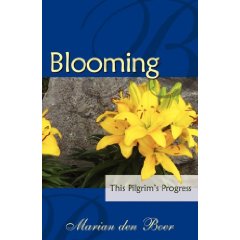
West Nile Diary: One Couple’s Triumph Over a Deadly Disease by Kathleen Gibson (BPS Books, 2009)
Bugs are an unwelcome but expected part of a picnic. The mosquito that bit Rick Gibson in August 2007 gave something back: West Nile neurological disease.
West Nile Diary is the story of Rick and Kathleen Gibson’s battle to recover from what Kathleen calls “the pirates of West Nile.” Like a pirate attack, the disease hit without warning, plundered their lives and left them facing a difficult and uncertain future.
Kathleen tells their story through journal entries, emails and her newspaper column, “Sunny Side Up.” It’s a frank, personal account that left me not only cheering for the Gibsons but feeling like I now know Kathleen much better than our passing acquaintance would suggest.
The book is non-fiction but it reads like a novel, complete with escalating tension and reversals. It’s done without chapter breaks, each entry two pages at the most, and I stayed awake way too late reading “just one more.”
It’s a story of illness and the struggle to regain independent life, but it’s not a “downer.” Certain sections had me blinking back tears, but others made me laugh. Kathleen’s informal and personal writing style made it feel like she was telling me the story one-on-one.
According to the CBC website, “In Canada, 42 people have died from the virus since 2002.” The same article adds, “In 2008, the Public Health Agency of Canada said the number of human cases totalled 38.” That’s down from 2,401 in 2007 and 6 in the first 37 weeks of 2009. Let’s hope it stays down.
Only one in 50 cases will develop into meningitis or encephalitis like Rick’s. Most readers will be the lucky ones who escape West Nile entirely. But we’ll all experience serious illness—either as the victim, the caregiver, or the supportive friend or loved one.
West Nile Diary lets us walk in the footsteps of one couple’s journey and although our own may be very different there are similarities for which we can prepare.
For all the good medical staff, there will be some clashes. Some good friends will fade out of our lives; others will amaze us with their care. We’ll develop new friendships with fellow travellers. Life will change. We’ll have no guarantee of the future. If we make it through, re-entry to “the real world” will be surprisingly scary, and the caregiver will find it hard to let the healing person become independent.
What made the difference every day for the Gibsons was their relationship with God. Kathleen prayed each day for “strength for today and hope for tomorrow.” God always said “yes” to that prayer. As well as restoring much of Rick’s health, He drew the couple into caring relationships with people they’d never have otherwise met.
Kathleen says, “I’ve learned three things in my journey down the West Nile with Rick and the pirates: God is a lot stronger than I thought he was, I’m a lot stronger than I thought I was, and God can do exquisite things with broken circumstances.” p. iix
To learn more about Canadian author Kathleen Gibson, visit her website. And be sure to check out her “Sunny Side Up” column. Kathleen is also the winner of Word Alive Press’ 2009 non-fiction contest for her book, Practice by Practice: The Art of Everyday Faith. Publication date has not yet been announced, but I hope it’s soon.
In closing, as Kathleen says in West Nile Diary, “PS. Wear repellent.”
Like this:
Like Loading...
 Mud in Your Eye, by Gord Penner (Word Alive Press, 2009)
Mud in Your Eye, by Gord Penner (Word Alive Press, 2009)




 A Journey to the Heart of Evangelism
A Journey to the Heart of Evangelism


